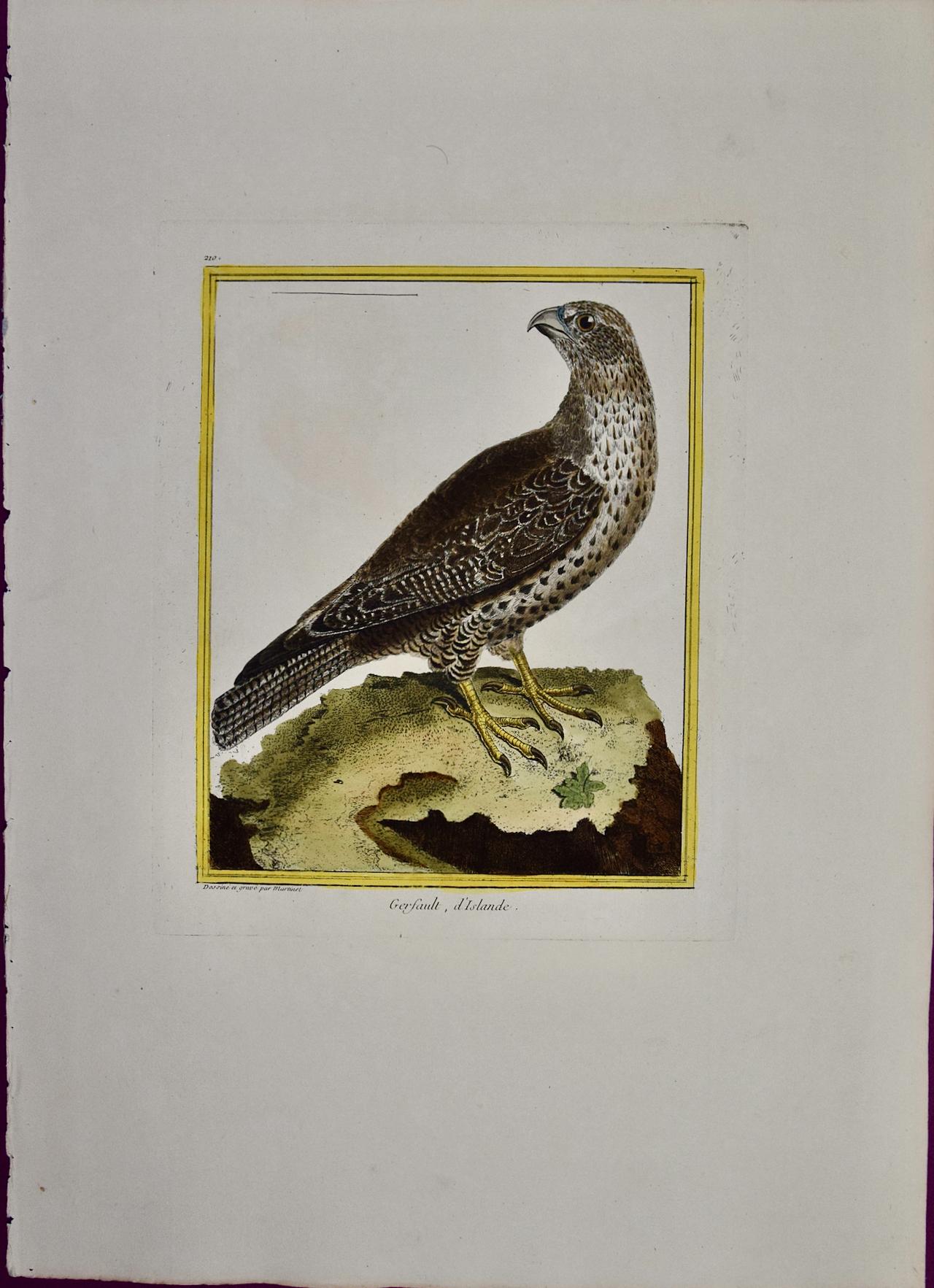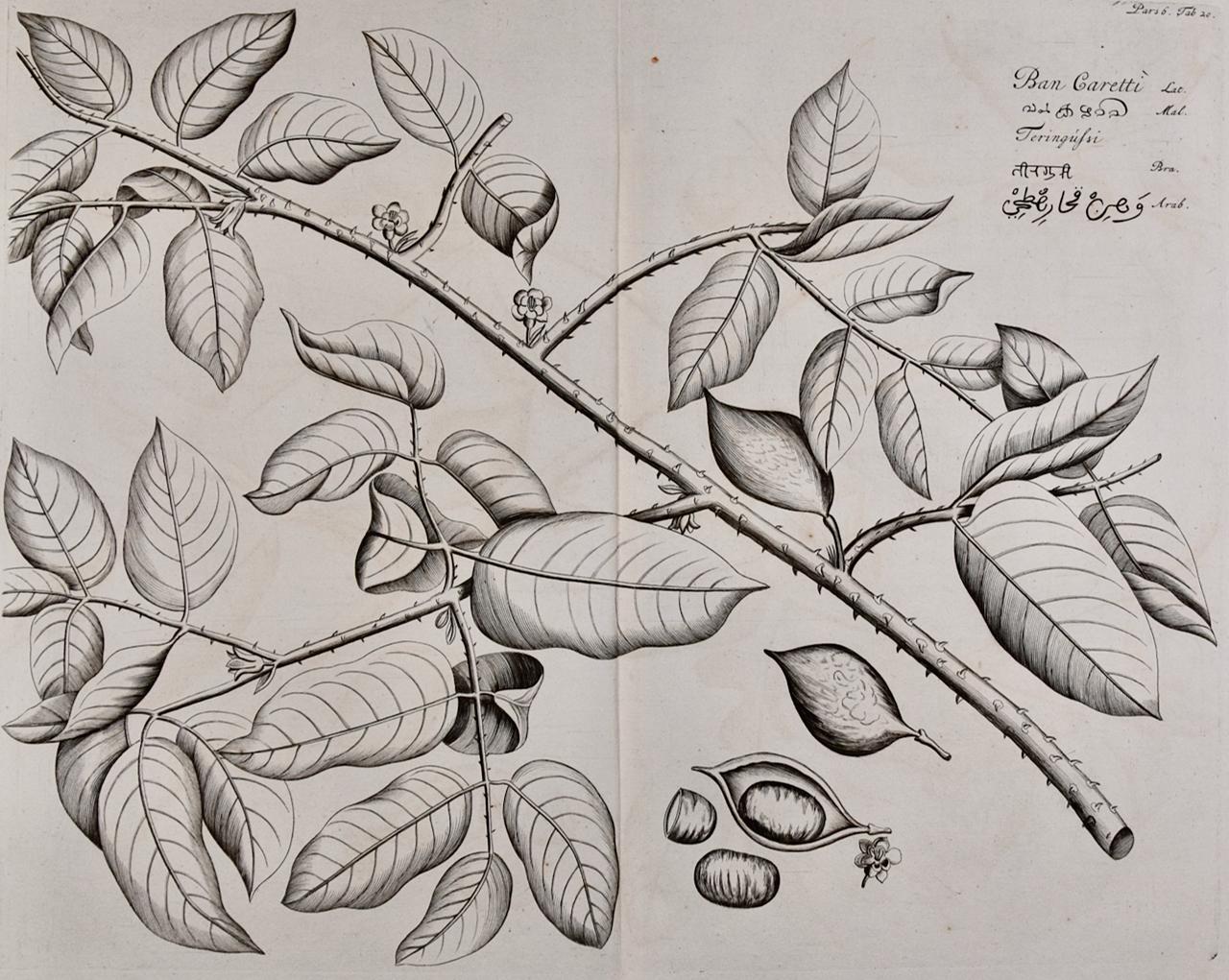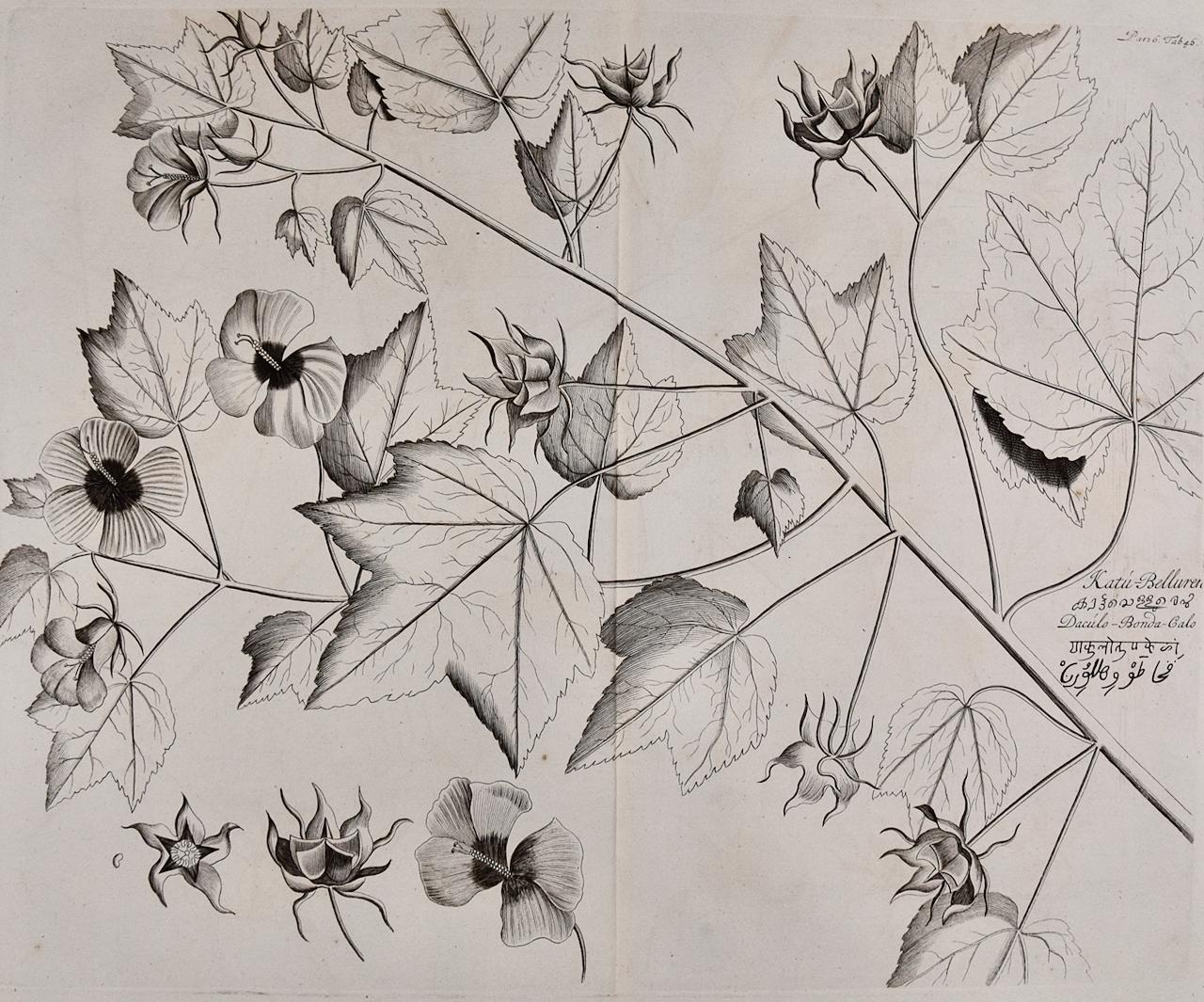Items Similar to Middleham Castle, Yorkshire. Paul Sandby C18th English landscape engraving
Want more images or videos?
Request additional images or videos from the seller
1 of 3
Paul SandbyMiddleham Castle, Yorkshire. Paul Sandby C18th English landscape engraving1780
1780
About the Item
'Part of Middleham Castle, NW Riding, Yorkshire'
Engraving by T Woodyer after Paul Sandby (1731-1809).
From Paul Sandby's 'The Virtuosi's Museum, Containing Select Views in England, Scotland, and Ireland', published by George Kearsley.
Paul Sandby was an important English landscape watercolourist. Accompanied by original descriptive text.
160mm by 205mm (platemark)
220mm by 265mm (sheet)
- Creator:Paul Sandby (1731 - 1809, English)
- Creation Year:1780
- Dimensions:Height: 8.67 in (22 cm)Width: 10.44 in (26.5 cm)
- Medium:
- Movement & Style:
- Period:
- Condition:Faint off setting to left of image - see photo.
- Gallery Location:Melbourne, AU
- Reference Number:1stDibs: LU124426900832
Paul Sandby
Sandby was born in Nottingham and moved to London in 1745. He and his brother Thomas first worked in the military drawing department at the Tower of London, later working on a military survey of new roads and bridges in the Highlands. On leaving this post in 1751 he spent some time living with his brother who had been appointed Deputy Ranger of Windsor Great Park. There he assisted his brother, and made a series of drawings of the castle, town and neighbourhood. In 1760 he settled in London where he contributed to the first exhibition of the Society of Artists where he regularly exhibited until the foundation of the Royal Academy in 1768, beoming one of its founder members. In same year he was appointed chief drawing master to the Royal Military Academy at Woolwich. He died at his house in Paddington on 7 November 1809, and was buried in the burial ground of St George’s, Hanover Square. He was described in his obituaries as “the father of modern landscape painting in watercolours”.
About the Seller
5.0
Gold Seller
These expertly vetted sellers are highly rated and consistently exceed customer expectations.
Established in 2005
1stDibs seller since 2019
448 sales on 1stDibs
Typical response time: 2 hours
- ShippingRetrieving quote...Ships From: Melbourne, Australia
- Return PolicyA return for this item may be initiated within 14 days of delivery.
More From This SellerView All
- Vue d'une partie du Lac de Geneve, Switzerland, engraving, circa 1780Located in Melbourne, VictoriaFrench copper-line engraving depicting the Lake of Geneva, Switzerland. From 'The Scenery and Science of Switzerland illustrated', by Antoine Baron de Zurlauben (1720-1795) & Jean B...Category
1780s Naturalistic Landscape Prints
MaterialsEngraving
- Representation Generale de la Voute de La Galerie du President, French engravingBy Charles DibdinLocated in Melbourne, VictoriaCopper-line engraving by Mathys Pool (1676-1732) after Picart and Charles Le Brun (1619-1690). 1718. Depicts a ceiling design commissioned for the Hot...Category
Early 19th Century Naturalistic Landscape Prints
MaterialsEngraving
- 'Vue des Montagnes du Val-Travers, Neuchatel, Switzerland, engraving, 1780Located in Melbourne, Victoria'Vue des Montagnes du Val-Travers, d'ou aperçoit le Lac de Neuchatel' French copper-line engraving by Duparc after Claude Louis Chatelet (1753-1794). From 'Th...Category
1780s Naturalistic Landscape Prints
MaterialsEngraving
- Vue de la Ville et du Lac de Geneve, Switzerland, copper-line engraving, c1780Located in Melbourne, VictoriaFrench copper-line engraving depicting the Town and Lake of Geneva, Switzerland. Claude-Louis Chatelet was a distinguished French painter, draftsman an...Category
1780s Naturalistic Landscape Prints
MaterialsEngraving
- Mexican on a donkey, Mexico, Mortimer Menpes etching with drypoint, 1914By Mortimer MenpesLocated in Melbourne, VictoriaSigned in pencil below the image. Signed and dated in the plate. The number '327' inscribed in pencil in lower margin. Mortimer Menpes was an artist and engraver, author, printmake...Category
Early 20th Century Naturalistic Landscape Prints
MaterialsEngraving
- Chertsey Bridge, Surrey, Thames, late 18th century English sepia aquatint, 1799Located in Melbourne, Victoria'Chertsey Bridge, Surrey' Aquatint published by Samuel Ireland. From his 'Picturesque Views on the River Thames'. Ireland was an author and engraver who published several series of ...Category
Late 18th Century Naturalistic Landscape Prints
MaterialsEtching, Engraving, Aquatint
You May Also Like
- An Icelandic GyrFalcon: An 18th Century Hand-colored Engraving by MartinetBy François Nicolas MartinetLocated in Alamo, CAThis is a hand-colored engraving of an Icelandic Ger Falcon entitled "Gerfault d''Islande" by Francois Nicolas Martinet, plate 210 from 'Histoire Naturelle des Oiseaux' in associatio...Category
1760s Naturalistic Animal Prints
MaterialsEngraving
- A Greenfinch & A Sparrow: An 18th Century Hand-colored Engraving by MartinetBy François Nicolas MartinetLocated in Alamo, CAThis is a hand-colored engraving of a Greenfinch bird and a tree sparrow ("1, Le Friquet, 2. Le Verdier") by Francois Nicolas Martinet, plate 227 from 'Histoire Naturelle des Oiseaux...Category
1760s Naturalistic Animal Prints
MaterialsEngraving
- A Falkland Island Quail: An 18th Century Hand-colored Engraving by MartinetBy François Nicolas MartinetLocated in Alamo, CAThis is a hand-colored engraving of a Falkland Island Quail ("Caille des Isles Malouines") by Francois Nicolas Martinet, plate 222 from 'Histoire Naturelle des Oiseaux' in associatio...Category
1760s Naturalistic Animal Prints
MaterialsEngraving
- Fever Nut Plant "Ban Caretti": A 17th Century Engraving by Hendrik van RheedeLocated in Alamo, CAThis is a 17th century engraving of a fever or bonduc nut plant entitled "Ban Caretti" by Hendrik van Rheede tot Drakenstein, plate 20 from his 'Hortus Indi...Category
Late 17th Century Naturalistic Landscape Prints
MaterialsEngraving
- "Katu-Belluren": A 17th Century Botanical Engraving by Hendrik van RheedeLocated in Alamo, CAThis is a 17th century engraving of a vine spinach plant entitled "Katu-Belluren" by Hendrik van Rheede tot Drakenstein, plate 46 from his 'Hortus Indicus M...Category
Late 17th Century Naturalistic Landscape Prints
MaterialsEngraving
- "Coastal Ti Tree" Gums NSW Drypoint Etching in Ink on Paper No. 30/100Located in Soquel, CA"Coastal Ti Tree" Drypoint Etching in Ink on Paper No. 30/100 Detailed etching attributed to Ernest Edwin Abbot (British, 1888-1973). Several trees grow along the coast at the edge of the water at Ti Tree, Australia. In the far distance, a mountain range can be seen on the opposite shore. Titled and numbered "Coastal Ti Tree 30-100" in the left corner. Signed "G. Cope" in the right corner. Presented in a new black mat with foamcore backing. Mat size: 11"H x 14"W Paper size: 5.5"H x 10.25"W According to The Centre for Australian Art: Prints + Printmaking, Abbot often produced work under the pseudonym "G. Cope" Ernest Edwin Abbott was born in 1889 and grew up in Bideford United Kingdom, With his younger siblings Violet, Reginald, Olive and his parents Charles and Sarah Abbott, His Farther worked as a upholsterer. Abbott decided in 1911 to migrate to Western Australia on the ship Tainui, Settled in Western Australia he then married his wife Florence Radcliffe Olde in 1913 whom also came to Australia in 1912 from Bideford. They had two sons, Reginald Douglas Abbott and Kenneth John Abbott. They moved to South Australia where he taught art at Stott’s for four years. Later in 1920 the family moved to the suburb of Kew in Melbourne Victoria, where he took a studio in Oxford Chambers at 475 Bourke Street. He also built a studio later at his home in Black Rock. In about 1920 or 1930 he took up dry-point etching, and gave up his city studio to concentrate on printmaking at his home. Abbott made his own engraving tools...Category
Early 20th Century Naturalistic Landscape Prints
MaterialsPaper, Ink, Drypoint
Recently Viewed
View AllMore Ways To Browse
Engravings England
Paul English
English Castle
Yorkshire England
Scotland Castles
Scottish Castle
English Riding
Castle Ireland
Scones Arabic
Shang Chengxiang
Studio Alium
Sweetgrass Carriers
Telemaco Signorini On Sale
Tetsuro Sawada
Tiffany South Coast Plaza
Tiger Tateishi
Tobias Geye
Utagawa Hiroshige Rakan Temple






